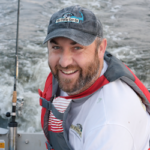*Please login or start a membership to access the full version of this podcast.
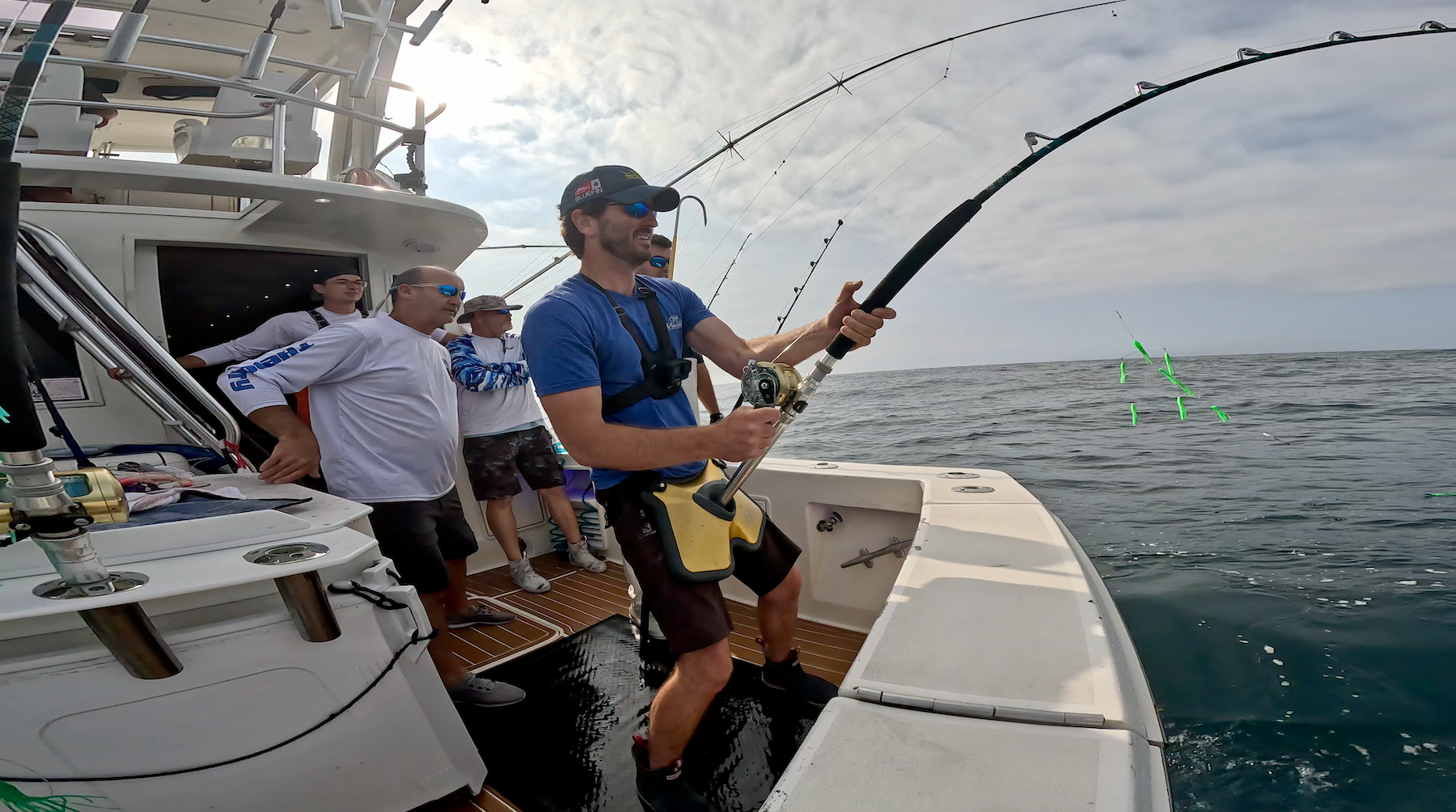
Ryan Collins
First up on this week's edition of the My Fishing Cape Cod Podcast presented by Cape & Islands Mitsubishi and Cape Codder Boats is MFCC Founder and Creator, Ryan Collins. Ryan joins us via the phone fresh off a very successful Fluke vs Cancer trip with Bruno Demir and Eddy Kooyomjian. The Fluke bit was consistent out around Nantucket and Ryan provides insight into the trip.
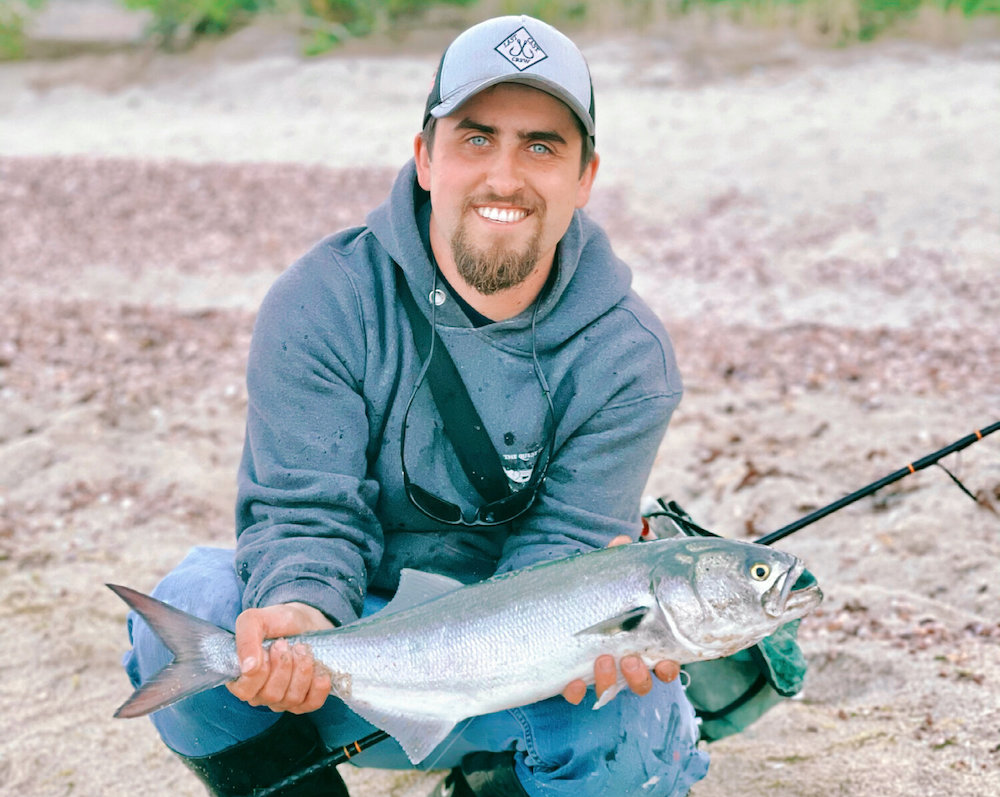
Sam Mullin
Next, Sam Mullin of the Goose Hummock joins the podcast. Sam gives us a great striped bass surfcasting report from the backside facing beaches and then a very encouraging funny fish report centered around false albacore.
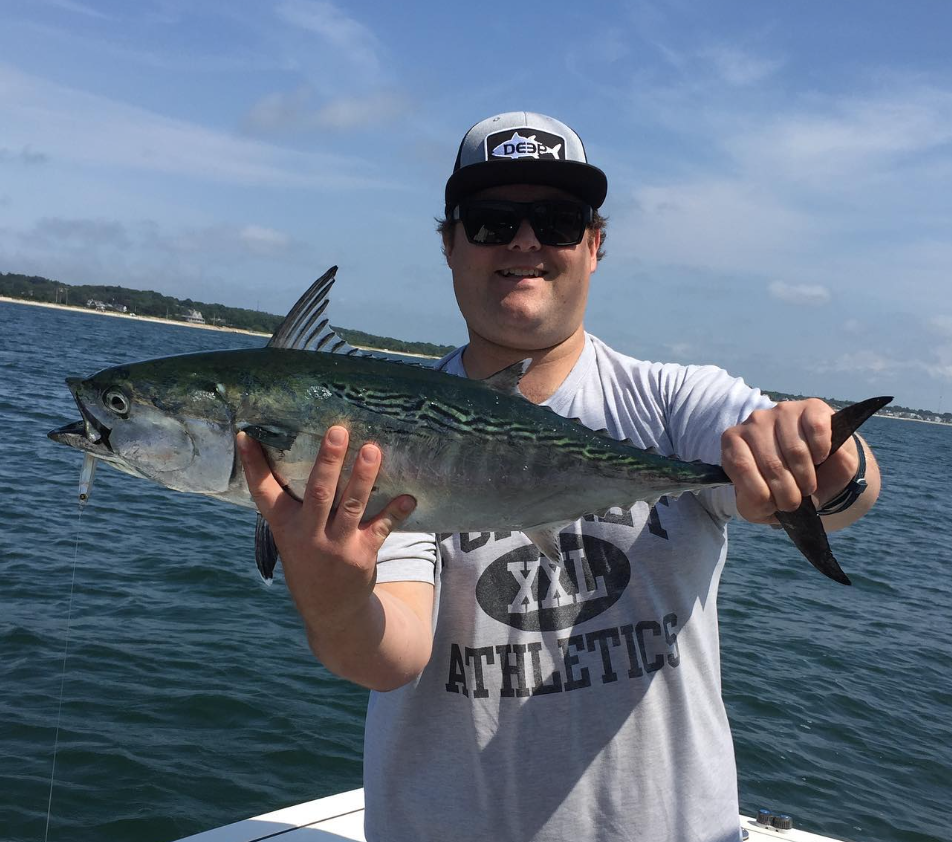
Evan Eastman
Next, Evan Eastman joins the show from Eastman's Sport and Tackle in Falmouth, MA. Evan's shop is at the heart of the albacore action and he gives us a detailed funny fish report for Falmouth and Vineyard Sound. He also provides information on blue fish still around the area as well as recreational blue fin tuna.
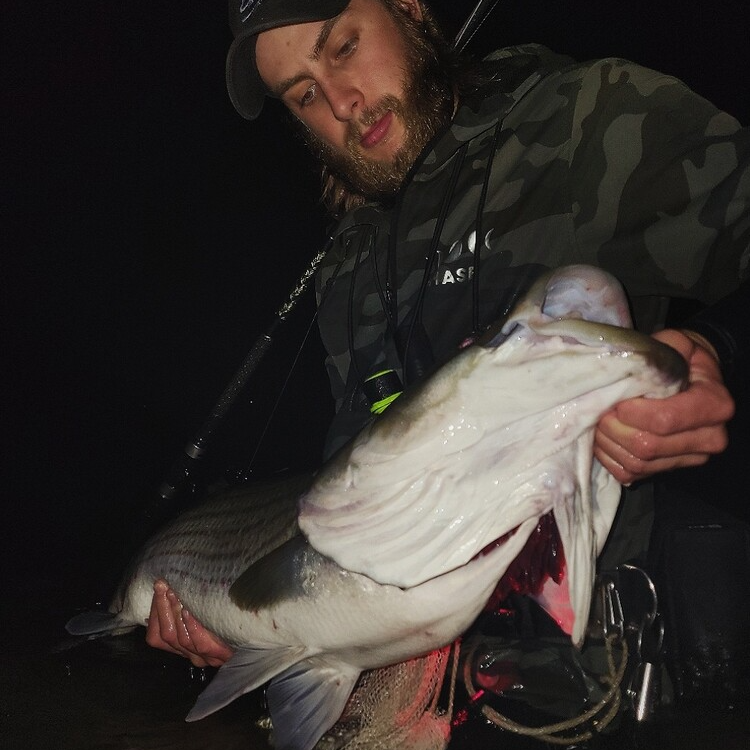
Calvin Toran-Sandlin
Lastly, we check in with MFCC Member, Calvin Toran-Sandlin. Calvin takes a close look at the fall run and how to prepare your strategy and your gear for September.
Written Transcript
*Please forgive us for typos and grammatical mistakes, as this transcript was generated by a computer.
Speaker 2 (26:51):
Coming up. Last but certainly not least on this edition of the My Fishing Cape Cod podcast presented by Cape and Islands Mitsubishi and Cape Codder Boats is an excerpt of my conversation this week with M F C C member Calvin Torrens Sandlin for those unfamiliar with Calvin. He's a true diehard surf casting angler who puts in more time than pretty much anybody I know here on Cape. He's a consistent presence in the Boulder fields hunting large stripe bass pretty much whenever they're in our waters. And Calvin has been kind enough to share his experience and expertise with us here on the podcast. So here's an excerpt of my sit down conversation this week with Calvin Torrance Sandlin. We talk a little bit about the wind and some different, I'll say factors that are going to go into your selections of regions to fish and how you're going to fish them. Can you talk a little bit about your setup for these different conditions, rod reel line leader, kind of depending on the spot and perhaps give us some examples of what you're kind of facing out there.
Speaker 6 (27:54):
Absolutely. Well, when I'm fishing Boulder Fields heavy structure, I really do believe that heavy gear is the appropriate answer for those situations. Not only because it gives you a better shot at landing a fish, but it allows you to land green fish, healthy fish that you can safely release. If I'm fishing heavy structure, heavy boulder fields or this summer fishing areas that have a lot of sharks in them, I'll bump my gear up to say a 50 pound main line with a 60 or 80 pound liter because that not only gives me the ability to turn a fish, but it gives me the ability to get a fish off of structure with that longer heavier leader to create some abrasion resistance if I wind up around a rock or whatever submerged structure, I'm fishing. Now, certain areas in Cape Cod Bay, we have a lot of extended sandy bar and trough patterns.
(28:57):
A lot of times distance is key in those situations. So I might downsize a little bit to something like a 40 pound or 30 pound mainline, maybe a 40 pound liter. I was fishing a spot this past week and I made what I would consider a little bit of an error. I was on a good bite, kind of one of those outgoing tide scenarios, fishing a fairly sandy structure and I chose for a specific reason to tie on a 40 pound liter that being at this spot at the top of the tide, I see a lot of what I call fire in the water or bioluminescence. It can create kind of a sheen or a glow around not only your plug and the fish that are in the water, but also your mainline and leader. So I downsized a little bit to try to avoid too much signature in the water that might turn off or spook fish.
(29:54):
I got into a number of decent fish and at one point I had a very large fish break me off. So what I didn't do in that situation was I didn't adapt to the conditions that tide dropped and I started to see less fire and I started to see larger fish. I feel like I should have probably upgraded to something like 50 or 60 pound liter just because when you're catching one fish after another, even in a sandy environment, those fish will drag along the bottom, they'll do anything to throw that hook and that leader is going to get a braided, it's going to get worn down, your knots might fail. What I didn't do was I didn't do my due diligence to check my leader, check my main line throughout that tide to make sure that you wouldn't have a point of failure. And so that's one of those things where hindsight is 2020 and when you're on the water, I would always recommend consider the conditions, consider how they change and consider how that might affect your gear and how you adapt to the situations at hand.
Speaker 2 (30:58):
And one of the other things I wanted to talk about too, as we're talking about this transitional period that we're entering into, what are some of the signs that you're looking for? Say as you go out this week or the time that you've spent over the past three or four days fishing, you look for telltale signs that things are changing, things are shifting. You mentioned the fish themselves, they'll look to perhaps feed a little bit heavier, maybe this northeast blow that we're getting this week in the middle of the week, Tuesday, Wednesday, Thursday. That might signify to them the change of the season, so to speak, where they might feed a little heavier, maybe they school, maybe they start to think about that migratory pattern. But what are some of the signs that you're looking for as an angler to signify that?
Speaker 6 (31:46):
Well, one of the major ones, and I think I'm not alone in looking for this, when we start to see big balls of bait set up in places like the south side, those peanut bunker or that rain bait, that is a great signal that the fall run is about to kick off. When the funny fish, the albe and the bonito, we know they've started to show up in numbers around Cape Cod, now they show up at least partly due to that bait presence. So that's another great signifier. Now I don't necessarily chase those fish all that much. I dedicate more of my time to hunting for striped bass at night. But when you keep an eye on the reports and you start to see that come in more and more, that's a great sign that not only will those fish be feeding on those peanut bunker and rain bait situations, but that bass will be feeding on those same baits after dark.
(32:40):
So the bait presence is obviously a big sign for me as we've talked about quite a bit, that wind shift starting to see different wind patterns and cooling air and water temperatures, that's very important and not only signifies, but it helps kick off the fall run. Probably the other one that I would say is a good signal is when some of those fall run spots start to get crowded, guys start to dial in on that bite and the info gets out there and that's when you have to start getting creative and finding new spots, different spots out of the way areas where you can still make a good presentation and still have a successful outing without tangled lines and plugs and jigs flying past your head at 2:00 AM
Speaker 2 (33:35):
For sure. And one of the things we chatted about too in the last podcast is the presence of different things in the water. And we spoke a lot about the different tropical fish that have moved into our area and we certainly still continue to see reports on social media of those fish being taken. What are you seeing out there, Calvin?
Speaker 6 (33:56):
Lately I've been seeing quite a few very large needle fish in some of the same waters I'm hunting for bass. That's not only a cool tropical species and it can be fun to target in its own right, but I have a feeling that at least to some extent those bass may key in on and target needle fish. So I don't think it's a bad idea to be carrying a few either large soft plastics like a sluggo or true needle fish plugs this time of year seeing a lot of banded rudder fish, which if I remember correctly, or a member of the jack family this time of year, we also start to see other interesting tropical species. Some jacks will migrate up the coast lizard fish. I saw a couple of those while snorkeling a couple of days ago in a fairly shallow sandy area. So it's always interesting to see kind of the biodiversity that we have late in the summer season. One thing for anyone who's in the water around Cape Cod right now, especially on the salt side or in Buzzards Bay, especially for those wet suitors or wet waiters or swimmers, there's a lot of lion's mane jellyfish. They're nasty critters. They'll give you a good sting. And I had one night where I think I counted 30 or 40 on a tide drift by in the sweep. Something to keep in mind and be a little cognizant of when you're out there on the water
Speaker 2 (35:27):
And what do those guys look like, Calvin? I don't think I'm familiar with those.
Speaker 6 (35:30):
I've typically seen them. They usually have a kind of pale to reddish bulb top. Some of them have quite long trailing tentacles behind them. They're very distinct when you compare them to something like the moon jellyfish, which are more common in our waters throughout the season. And they typically have kind of a clear bulb. The lion's mains, like I said, they're red, they look nasty and they have long tentacles. I would stay away from them. And if you do have the misfortune to encounter them, flushing the sting with hot water typically has helped for me best to just be wary and to avoid them when possible.
Speaker 2 (36:13):
Awesome. Yeah, that's definitely helpful and thanks for describing what those guys look like. I was definitely curious, so I can look out for myself and my four-legged first mate on my little lobster vessel as we push toward the last week here in August. I want to use our last few minutes here to just talk about, I'll say your strategy heading into Labor day weekend, we'll call it. What are some things you're looking forward to trying and some new challenges that you're looking forward to? As we flip the script into September,
Speaker 6 (36:46):
We're almost at the point where I'll start going back to some of those spring spots, which will fish well in the fall as well. Certain locations, the water's still too warm, so I'm still going to be maintaining that summertime pattern for a little while longer while also staying flexible to shifting conditions. If I have a strong northeast wind, well I'll probably shift my approach for that night and try to fish some whitewater conditions, wetsuit out a little bit, have some fun. But maintaining those summertime patterns that have been producing, I've been having very good luck in certain areas with quite sizable fish so far this season and I don't see that shifting quite yet. So I'll try to remain on those fish while keeping an eye on those signifiers that we talked about, that it might be time to start looking at some new water as the water begins to cool and the bait begins to move in and those fish begin to migrate.
(37:55):
So I'm still throwing a lot of eels. Pretty soon I'm going to be still throwing a lot of eels, but carrying a lot more needles, a lot more buck tails, having some fun with different plugs and different approaches. And the fall run is great not only because you can catch a lot of fish, but because you can experiment with different techniques. Once you've caught a few fish with one method, a lot of times it's fun to try to mix it up. It's not only fun and rewarding, but it's also a great learning experience when you see how a certain plug or a certain jig reacts during a bite to produce fish or not produce fish in certain situations.
Speaker 2 (38:39):
And I think you might've just answered my question here, but you're hint hinting at plugs and jigs. Are we starting to get to that time where Calvin, I'll say, starts to experiment more with that as opposed to just sticking with your standard eel presentation?
Speaker 6 (38:56):
I think last September and October I only threw eels a handful of nights, which is interesting because I throw eels most nights during the summer months just because of how productive they are. If history kind of repeats itself and I feel like the patterns usually hold consistent in the spots I fish, I'll be doing very well, mixing it up with needle fish, with bucktails in certain situations. Big metal lips we're really productive last fall and I think that can be one of the most fun experiences you can have in the surf. It's rewarding when you're out there fishing big water and throwing nine 10 inch heavy surface swimming metal lips and it's like a daytime blitz where big bass are coming up on top and you can either watch them or you can hear them crushing these plugs in the white water. I don't think it gets much better than that when it comes to surf fishing around Cape Cod or here on the northeast.
Speaker 2 (40:03):
My thanks to Proud M F C C member Calvin Torin Sandlin for joining us here on this edition of the My Fishing Cape Cod podcast presented by Cape and Islands Mitsubishi and Cape Codder Boats. And I'd like to take a moment to thank all of our guest experts that joined us on today's program, starting with M F C C, founder and creator Ryan Collins, Sam Mullen of the Goose Hummock in New Orleans, Evan Eastman of Eastman Sport and Tackle. And last but not least, M F C C member Calvin Torin Sandlin. And that's another great show for the month of August in the books for us here at my fishing Cape Cod. It's a bittersweet end to one of the most beautiful summer months we have here, but I know Calvin and so many of you are really excited and gearing up for the fall run. So until we chat again next week, which will be in September, this is your host, Kevin Collins, signing off tight lines and take care.

